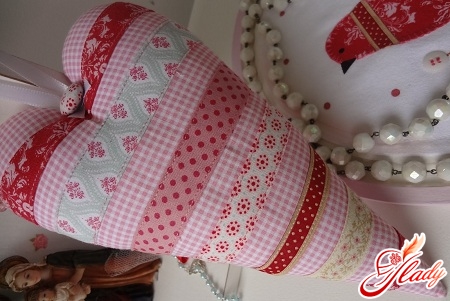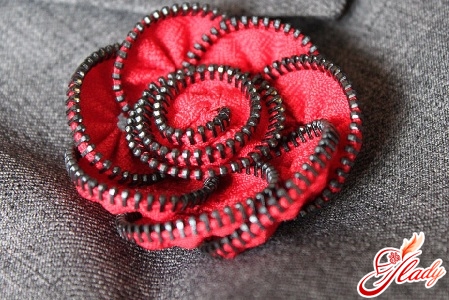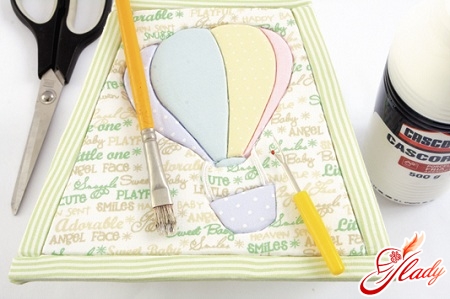 Fashionable, comfortable and useful slings are nothing newan invention, but only improved models of traditional folk devices - slings for carrying children. Almost all peoples of the world had such rags-cradles. Judge for yourself. In Rus', children were carried in aprons or in the hem of a long skirt (hence the expression "to bring in a hem"), gypsy women adapted their huge shawls for this, Japanese and Chinese women, natives of South America and Africa carried children in scarves, kerchiefs, towels. In a word, they used for these purposes any fabrics suitable in size and quality. By the way, it was the folk "models" of slings that served as the basis for modern varieties of slings. And considering that our predecessors did not have any special tools except a needle and thread, we can assume that each of us is quite capable of making a sling. Well, if you and I are such clever girls and needlewomen, then we have no choice but to sew a sling with our own hands. And as a basis we will take national models of cradle patches.
Fashionable, comfortable and useful slings are nothing newan invention, but only improved models of traditional folk devices - slings for carrying children. Almost all peoples of the world had such rags-cradles. Judge for yourself. In Rus', children were carried in aprons or in the hem of a long skirt (hence the expression "to bring in a hem"), gypsy women adapted their huge shawls for this, Japanese and Chinese women, natives of South America and Africa carried children in scarves, kerchiefs, towels. In a word, they used for these purposes any fabrics suitable in size and quality. By the way, it was the folk "models" of slings that served as the basis for modern varieties of slings. And considering that our predecessors did not have any special tools except a needle and thread, we can assume that each of us is quite capable of making a sling. Well, if you and I are such clever girls and needlewomen, then we have no choice but to sew a sling with our own hands. And as a basis we will take national models of cradle patches.
Sling - scarf
Whose traditions exactly formed the basis of modernmodels of sling-scarf, now you can’t even tell. In Belarus, rushnyks (long rectangular towels) were used as carriers, gypsy women carried children in shawls and long wide scarves (dykhlo), the Mexican rebozo scarf can be considered the prototype of this type of sling. In a word, the model is multinational. And in order to sew such a sling with your own hands, we will need:
- a dense, but soft tissue;
- thread in the tone of the fabric;
- sewing machine.
Let's discuss the nuances of choosing fabric right away.for a sling-scarf. Fabric that stretches a lot is only suitable for a newborn baby. For older babies, it is better to sew slings from a fabric that does not stretch at all or from one that stretches only slightly. The density of the fabric should be assessed by its ability to tie into a strong knot - after all, this is how you will secure the sling-scarf. Ideally, the sling should be tied with one knot, but two are also possible, just not too bulky. Try to choose natural fabrics - cotton, linen and wool, and if the fabric stretches, then make sure that it stretches evenly along the grain and cross thread. So, cut out a patch from which we will make a sling. The width of the patch depends on the elasticity of the fabric: for stretchy fabrics it will be from forty-five to fifty-five centimeters, for less elastic fabric - from sixty to seventy centimeters. The length of the future sling is determined by the size of the mother: women up to size forty-four will need a sling from four to four and a half meters long, larger mothers will need from four and a half to five and a half meters of fabric for the sling. The shape of the pattern can be strictly rectangular, with rounded, beveled or tapered ends. The shape of the ends plays more of an aesthetic role and does not have any fundamental differences. Having cut out the flap, we process the edges of the future sling, tucking them along the entire length and width of the pattern and stitching on the machine. You can also process the edges on an overlock, but this method is less practical, since the overcast edge of the sling can cling to clothes, a bag or jewelry. For fabrics that at first glance do not require processing, it is still better not to skip this stage: the tucked edge will make the sling more durable and pleasant to use. And to finish the job, you can sew a pocket or just a bright mark on the sling-scarf to make it easier to find the middle of the sling. Important! Try to use a one-piece piece of fabric for the sling-scarf. The transverse seam on such a sling will put pressure on the baby's back or on the mother's shoulders.
Sling with rings
Knowing how to sew a sling scarf, you cantry to make its improved version. We will sew a double-sided ring sling. This model is convenient, first of all, because it can be worn both under and over winter clothes. And in such a sling it is convenient to carry a child in any position, and it is suitable for mothers of different builds. So, how to sew a ring sling? For it we will need:
- metal rings with an internal diameter of six to seven centimeters - 2 pieces;
- a two-sided cloth cut in width of 80 centimeters - 2 meters 40 centimeters;
- sewing machine.
We choose a fabric that doesn't stretch too much, yesso that if it stretches, then only in width, but not in the length of the sling. For such a model, not very thick denim, corduroy, double-sided fleece are suitable. By the way, choose any fabric only double-sided, since the sling will have a free fluffy "tail". And do not forget that the sling is not only a convenient device, but also an item of your equipment. So think about the harmonious combination of fabric for the sling with your wardrobe and style. So, take a piece of fabric (from 2 to 2.4 m) and process all the edges (in a fold or on an overlock). We pass one edge of the flap through two rings, wrap it so that the rings are on the edge of the sling, and sew the wrapped edge to the main fabric. To do this, make three straight or zigzag lines along a semicircular line. In fact, the sling with rings is ready. All that's left is to try it on and figure out how to make the folds of the free end more interesting.
May - sling
ABOUT!This model was inherited by hardworking Chinese women who invented a sling that allows you to comfortably and safely carry a child and completely frees up the mother's hands. A more complex version of the sling than the two previous models, but also more convenient. This sling looks more like an apron with long straps in the lower corners. When you put a child in it, you lift the "apron" up, and cross the straps behind the mother's back and fasten them in front. How to sew a mei tai with your own hands? For a sling measuring 35 by 45 centimeters with two-meter upper straps 9 centimeters wide and a waist strap 8 by 160 centimeters, prepare:
- cut fabric - 2 meters long 10 centimeters;
- sintepon in width of one and a half meter - 16 centimeters;
- sewing machine.
First, cut out 2 pieces from the main fabric48 by 38 centimeters plus one and a half centimeters on each side for seam allowances. Then cut out two upper straps measuring 21 centimeters by meter ten (plus allowances) and a waist strap measuring 19 by 163 centimeters (plus allowances). Cut out two inserts measuring 8 by 140 centimeters from padding polyester. Now start sewing the mei tai itself. Fold the waist strap piece in half along the length of the pattern and sew the folded edges. Turn the resulting tube inside out and iron it. Do the same with the upper straps. Next, insert padding polyester into the upper straps of the sling, aligning its edges with the ends of the straps, and sew with several lines at a distance of 15 centimeters. Turn over the raw edges of the straps and stitch. Leave the edge with padding polyester open. Place the sling parts with their right sides together and insert the straps between them (in the upper corners) so that they intersect in the center with the ends with the padding polyester. Fasten all the parts with pins and stitch the sling along the edge: start the stitching from the middle of one side, go up, along the upper side and go down to the middle of the second side. Remove the pins, turn it inside out, iron it. Now adjust the position of the upper straps and pin them. Fasten the waist strap, threaded along the bottom of the sling, with pins. Tuck the lower edges of the back under the waist strap and stitch the entire sling along the perimeter. Place the last stitch seven centimeters from the bottom of the sling, capturing the edge of the waist strap. Make a few additional stitches where the straps are attached. That's it! Your hand-sewn mei tai is ready! Don't reject the experience of our predecessors. If they used a sling to carry a child, it means it is really convenient! And note: they could not buy a ready-made device: everything had to be done with their own hands. And why are we worse? So choose a model, prepare the appropriate fabric, sew a sling and use this ancient invention for joy and health! We recommend reading:









